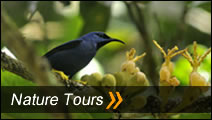FULL DAY PELAGIC BIRDING TRIP FROM CALLAO - LIMA
PELAGIC 2018 - 2019
CHOOSE A DAY AND WE WILL FIX A DEPARTURE FOR YOU

For birdwatchers, more than 52 species of marine and shore birds departing from Callao in Lima, Peru. This 10 hours allows us to see sub-Antarctic seabirds and warm water Petrels depending on the time of year such us: Waved, Salvin's, Buller's and Black-browed Albatross, Antarctic Giant Petrel, Cape Petrel, White-chinned Petrel, Pink-footed and Sooty Shearwater, Wilson's (Fuegian), White-vented, Wedge-rumped, Band-rumped, Sooty, Markham's and Ringed Storm Petrels, Chilean Skua, Swallow-tailed and Sabines Gull and Peruvian Diving Petrel. Inshore species include 3 species of Cormorants, Inca and South American and Peruvian Terns, Peruvian and Blue-footed Booby's. Marine birds endemic also, like Guanay, red-legged Cormorant, Peruvian Pelican and Peruvian Booby we will see on our return. We can also see the endemic Surf Cinclodes.
Most importantly we are offering you the safest option for pelagic birding on the central Peruvian coast (please read our safety advice before choosing a pelagic birding tour in Peru). While enjoying your birding tour you are guaranteed to observe South American Sea Lions and Dusky Dolphins, as well as having a good chance to see Common Dolphin, Bottlenose Dolphin and several species of whales are possible.
Tour briefing
-
English/Spanish bird tour leader
-
Snacks and drinking water
-
Sea lions at Palomino Islands
-
Trip to 30 miles off-shore
-
Life jackets
We leave port about 06.30 am. Approximately 3 hours of navigation to 30 miles offshore, 4 hours off-shore with some stops for birding, 3 hours return. Back in port about 4:00 pm (a).
It does nclude transport to and from the dock to your hotel.
We can fix day depart at any time of the year. Chose your day and we can work on a pelagic.
Cost, expresed in American Dollars, is as follow:
At the present there is not any depart beacause of pandemia Covid 19
Book your birding tour or get more information. E-mail us to: travelingperu@gmail.com
See below our bird species list for this trip:
Ep = Endemic to Peru, Ehc = Endemic to Humboldt current, P = Protected in Peru, T = Threatened
Common species all year round
Humboldt penguin (Ehc,P,T)
Peruvian diving-petrel (Ep, P, T)
Peruvian seaside cinclodes (Ep)
Waved albatross
Southern giant-petrel
Buller’s albatross
Shy albatross
Pink-footed shearwater
Sooty shearwater
White-chinned petrel
Cape petrel
Ringed storm-petrel
Wedge-rumped storm-petrel
Markham’s storm-petrel
Wilson’s storm-petrel
White-vented (Elliot’s) storm-petrel
Parasitic jaeger
Long-tailed jaeger
Pomarine jaeger
Chilean skua
Peruvian booby (Ehc, P)
Blue-footed booby
Neotropic cormorant
Guanay cormorant (Ehc, P)
Red-legged cormorant (Ehc, P)
Peruvian pelican (Ehc, P)
Inca tern (Ehc, P)
Arctic tern
Kelpgull
Belcher’s (Band-tailed) gull (Ehc)
Swallowtailed gull
Blackish oystercatcher (Ehc)
Ruddy turnstone
Surfbird
Snowy egret
Black-capped night heron
Blue-and-white swallow
Vermillion flycatcher
Occasional species all year round:
Common tern
South Amerikan tern
Laughing gull
Migratory Species:
Royal tern
Elegant tern
Sandwich tern
Gray gull (Ehc)
Franklin’s gull
Gray-hooded gull
Red-necked phalarope
Red phalarope
Wilson’s phalarope
Book your birding tour or get more information. E-mail us to: reserve@birdstravelingperu.com
You can also phone us at: (0051-1) 362-6642
Things to consider:
Sunburn and sea sickness are the most common problems our clients encounter. Please read and follow the advice below in order to fully enjoy your trip:
Sunburn
During summer months from December to March skies are mostly permanently blue and without clouds. Therefore sun-exposure at sea is very high. We recommend for the entire year (even in winter) bringing a hat and sunglasses, as well as using sun-block with the highest level of sun protection possible (45 or higher).
During the winter months from June to August temperatures are still around 16 degrees Celsius. The Peruvian coast will often be covered in fog in the morning that later on clears up and gives way to a grey and sometimes blue sky at around noon time. All marine travel programs are equally possible under these weather conditions but we recommend bringing warm and waterproof clothing. Sea sickness
.How to avoid sea sickness and involuntary fish feeding
• Don’t make the mistake to NOT eat before your boat ride. An empty stomach is as bad as one being too full. Be adequately hydrated, nourished and rested. However, if you start to feel apprehensive about the boat ride, don’t eat a large meal before departure. Munch on crackers and sip water or a sport drink.
|






